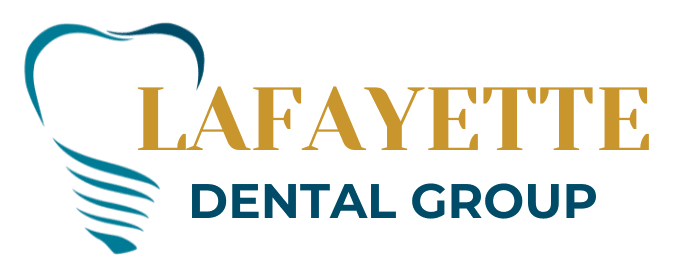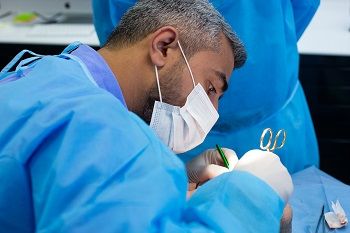

Post-operative care and recovery after Sinus Lift
Sinus lift surgery is a standard procedure performed to increase the height of the maxillary sinus floor in preparation for dental implants. While the system is typically safe and effective, it is essential to understand the post-operative care and recovery process to ensure optimal outcomes. This blog will provide a comprehensive overview of what to expect after a sinus lift, including tips for post-operative care, common symptoms, and the timeline for recovery.
What is the procedure of sinus lift surgery?
Steps involved in sinus lift surgery:
- Preparation: Before the procedure, a thorough examination and imaging are performed to determine the maxillary sinus's height and position and the jawbone's quantity and quality. Surgeons use this information to plan the procedure and choose the best method.

- Anesthesia: The procedure is performed under local or general anesthesia, depending on the individual case and patient preference.
- Elevation of the Sinus Membrane: A small incision is made in the gum tissue to access the jawbone. The membrane that covers the sinus is then carefully lifted, separating it from the jawbone.
- Placement of Bone Graft: Surgeons use bone graft material to place in the space between the lifted sinus membrane and the jawbone. This will provide a foundation for dental implant placement in the future.
- Closure of the Incision: Your surgeon will close the incision and suture your gums.
- Healing: After the procedure, your doctor will give you post-operative instructions, and you need to return for follow-up visits to monitor the healing process. During this time, the bone graft will integrate with the surrounding bone and create a strong foundation for the placement of dental implants.
- Placement of Dental Implants: After the bone has fully healed, dental implants can be placed in the newly grafted area.
Immediately After Surgery
After the sinus lift procedure, you will experience swelling and discomfort in the treatment area. You may also have some mild bleeding and discharge from the surgical site, which is normal. Your dentist may prescribe pain medication to help manage any discomfort.
To reduce swelling and minimize discomfort, it is essential to keep your head elevated and apply ice to the affected area. You should also avoid strenuous physical activity, such as exercise and heavy lifting, for several days after the procedure.
In the days following the procedure, it is normal to experience some mild discomfort, swelling, and tenderness in the treatment area. You should avoid blowing your nose, as this can pressure the surgical site and increase the risk of complications.
Post-operative Care
To ensure optimal healing and minimize the risk of complications, it is essential to follow your dentist's post-operative instructions carefully. Some standard post-operative care instructions include:
- Rinsing your mouth with warm salt water: Rinsing your mouth with warm salt water several times a day can help reduce swelling, minimize discomfort, and prevent infection.
- Taking antibiotics as prescribed: Your dentist may prescribe antibiotics to prevent infection and promote healing. It is essential to take the antibiotics as directed and finish the entire course, even if you feel better.
- Avoiding solid foods: It is essential to avoid solid foods for the first few days after the procedure and gradually introduce soft foods into your diet as tolerated.
- Avoiding smoking and alcohol: Smoking and alcohol can slow down the healing process and increase the risk of complications. Doctors recommend avoiding these substances for at least 72 hours after the procedure.
- Cleaning the surgical site: You should clean the surgical site gently with warm salt water several times a day. Avoid touching the area with your tongue or fingers.
Common Symptoms
In the days following the sinus lift procedure, it is normal to experience some mild discomfort, swelling, and tenderness in the treatment area. Some patients may also experience mild headaches, nasal congestion, and a slight increase in temperature.
You must contact your dentist immediately if you experience any severe symptoms, such as persistent pain, heavy bleeding, or difficulty breathing.
Timeline for Recovery
The timeline for recovery after a sinus lift procedure varies depending on several factors, including the patient's overall health, the procedure type, and the dental implants' location.
Typically, you can expect to return to normal activities within a few days of the procedure. However, it is important to avoid strenuous physical activity and heavy lifting for several weeks after the procedure for proper healing.

Regarding dental implants, doctors typically recommend waiting several months after the sinus lift procedure before placing the implants. This allows for proper healing of the bone graft and reduces the risk of complications.
Understanding the post-operative care and recovery process is essential to ensure optimal outcomes. Following your dentist's post-operative instructions, including avoiding solid foods and smoking, and taking antibiotics as prescribed, can help promote healing and minimize the risk of complications. If you experience severe symptoms, you must contact your dentist immediately. On average, patients can expect to return to normal activities within a few days of the procedure. Furthermore, waiting several months before placing the dental implants is essential for proper healing.
What are the success rate and long-term outcomes of sinus lift surgery?
Success Rate:
- The success rate of sinus lift procedures is generally high, with studies showing that 95-98% of cases are successful.
- The procedure's success is mainly dependent on the experience and expertise of the dentist.
- Additionally, the quality of the bone graft used also plays a crucial role in the procedure's success.
- Proper post-operative care can also significantly impact the success of the procedure. This includes avoiding habits that can negatively affect healing, such as smoking and excessive alcohol consumption.
Long-Term Outcomes:
- Sinus lift procedures can result in significant improvements in the quality of life for patients.
- The procedure can allow for the placement of dental implants. Furthermore, it restores the biting and chewing capabilities and improves your smile's overall appearance.
- The procedure's longevity depends on several factors, including the quality of the bone graft, your overall health, and post-operative care.
- A sinus lift procedure's outcome can be long-lasting and improve oral health and functionality with proper care and maintenance.
- It is important to remember that individual results may vary. Moreover, a consultation with a dentist is necessary to determine the best course of action for each case.
Conclusion
A sinus lift procedure's success rate and long-term outcomes are generally favorable. However, the specific results will vary based on the individual case. The dental surgeon's experience performing the procedure, the quality of the bone graft used, and proper post-operative care all play a crucial role in ensuring successful outcomes and long-lasting results.
Contact your Lafayette dentist, Dr. Massood Darvishzadeh, DDS at Lafayette Dental Group, to know more about Post-operative care and recovery after Sinus Lift.
Resource:
What happens during and after the sinus lift surgery?
*This media/content or any other on this website does not prescribe, recommend, or prevent any treatment or procedure. Therefore, we highly recommend that you get the advice of a qualified dentist or other medical practitioners regarding your specific dental condition*
Services
Contact Us
3466 Mt Diablo Blvd., Suite C207
Lafayette, CA 94549
2025 © Lafayette Dental Group | All rights reserved | Powered by: Vigorant, Inc.
